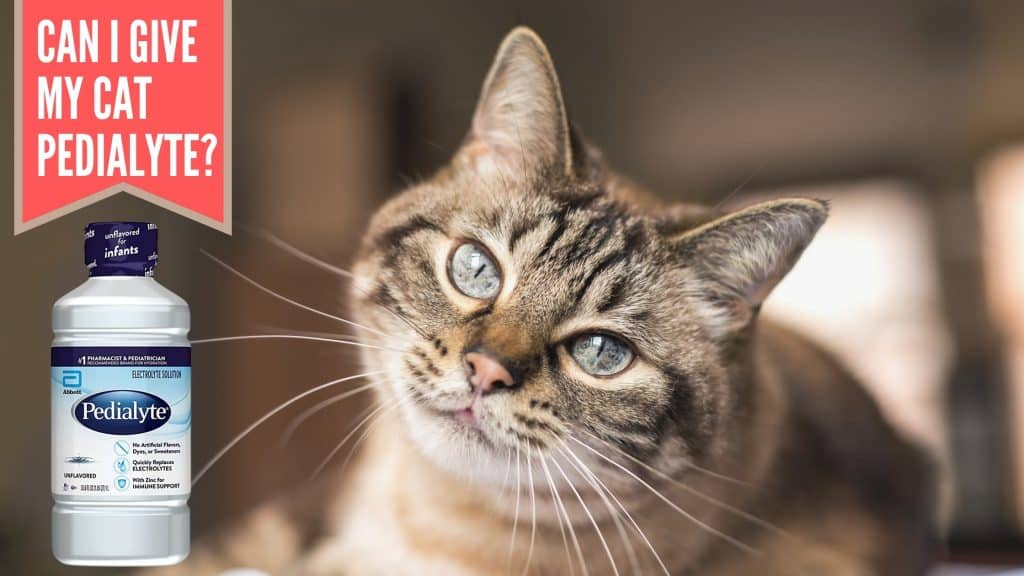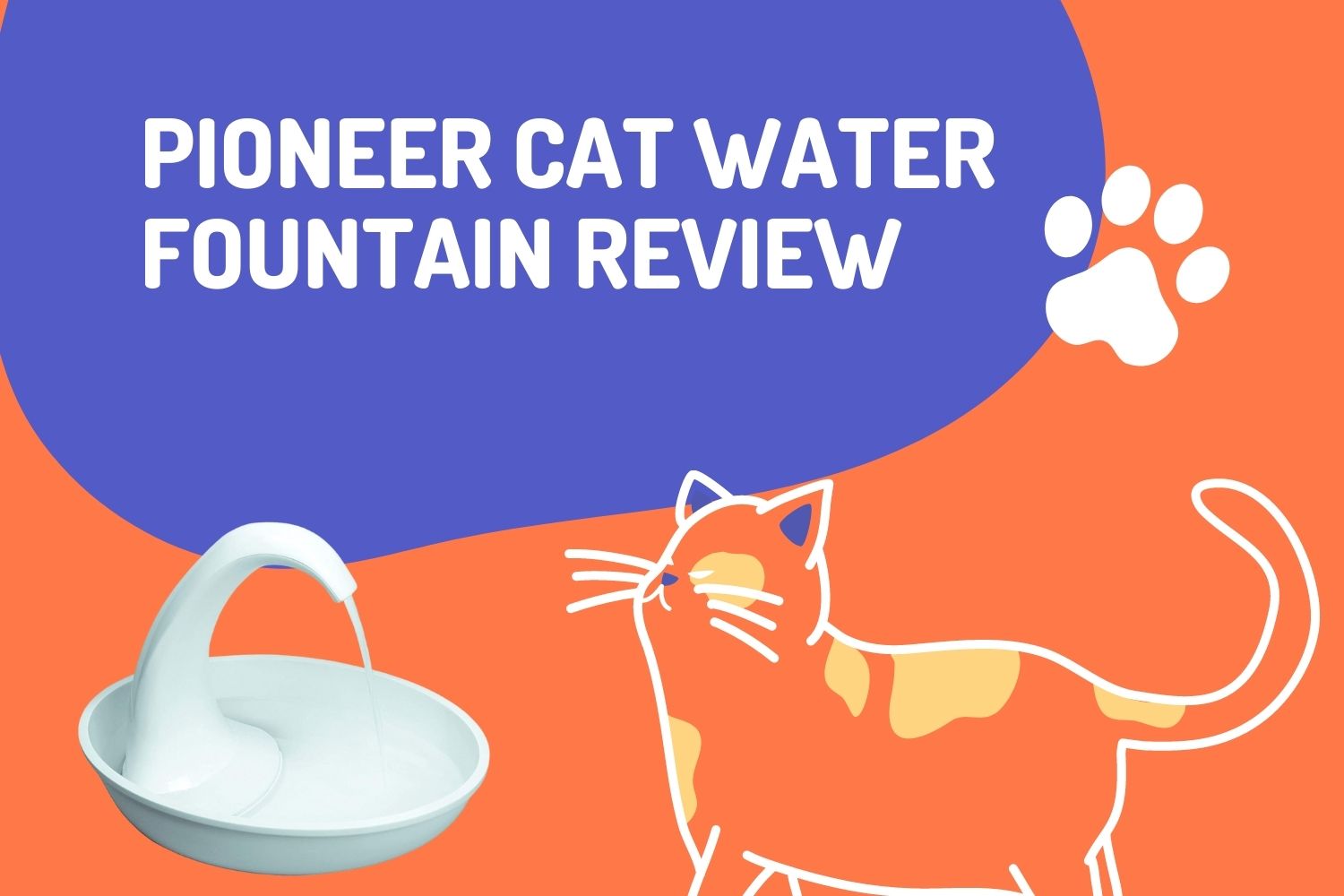
Pedialyte is a surefire option for giving your cat enough electrolytes so that they are not dehydrated. But is it the best option? can I give my cat Pedialyte in everyday life?
Pedialyte is a harmless, effective oral solution that’s mostly made with water and added electrolytes. For cats that cannot drink the water due to a physical condition or an illness or may refuse to drink it, Pedialyte gives them enough rehydration to keep them away from potential health risks.
However, Pedialyte should not be your only go-to option if your cat does not go near water. Let’s go over some essential details regarding cat rehydration and what you should do before using Pedialyte.
I recently made a list of dental water additives for cats after careful testing and evaluation. You can use these water additives for the dental hygiene of your cat.
Learning about Pedialyte and Cat Rehydration
Cats are notorious for hating water. But they don’t intentionally starve themselves of water. Nevertheless, a past traumatic incident or the general dislike of water may lead them down the road to dehydration.
That’s where many vets recommend using Pedialyte.
Pedialyte is not a severe form of medication. Instead, it gives humans and animals enough electrolytes to replace any their body sheds.
What is Pedialyte Made of?
While there are some medicinal ingredients in Pedialyte, including sodium, potassium, and chloride, it’s made chiefly with water, citric acid, and dextrose. In some cases, such as flavored Pedialyte, you may also find the ingredient list includes artificial flavor, FDA-approved food coloring, as well as several other effective ingredients.
Are There Any Cons of Pedialyte?
Pedialyte has a long list of benefits to its name. It’s effective in replacing minerals and fluids lost due to an illness, vomiting, or diarrhea. Pedialyte is not overwhelming for the system since its ingredients are generally harmless (even kids can have Pedialyte).
However, some may experience side effects such as mild nausea or even vomiting.
There are several severe allergic reactions. But, these are limited to humans, and even they are scarce due to allergies to specific food dyes.
In animals, such as cats, Pedialyte does not show any such reactions. If needed, you can even safely give a kitten—even a whelping kitten—Pedialyte in case they are dehydrated. The electrolytes from the drink are often enough to get them back on their feet.
When Should You Give Cats Pedialyte?
Sometimes, knowing when to give your cat Pedialyte makes all the difference. However, for that, you must learn what constitutes dehydration.
Dehydration refers to the lack of intake of water, depending on what their weight is. If your cat isn’t drinking as much water as they typically do, this may not necessarily mean they’re dehydrated. Remember that fluids from wet food also count as water. Therefore, your cat may not want to have any water at all unless necessary.
But, if your cat is not drinking water and staying away from wet food, this indicates that your cat needs rehydration immediately because they are sick. This is especially important if your cat is typically not picky about drinking water.
Causes of Dehydration in Cats
As stated before, illness is typically the main reason behind cats purposely dehydrating themselves.
If your cat isn’t drinking water, you’ll want to look for other symptoms. These include:
- Dry mouth
- Lethargy
- Lack of appetite
- Diarrhea
- Vomiting
- Dry heaving
- Pale gums
- Pale pink tongue
Another symptom is tenting. Pinch the skin behind their neck and gently pull it up. On release, if the skin remains “tented” and does not bounce back to its normal state, this means your cat is severely dehydrated.
But, let’s say your cat’s skin doesn’t tent. But they have been listless and have been experiencing bouts of diarrhea. Like humans, your cat wastes plenty of water content during diarrhea, leading to lethargy and nausea.
This is when Pedialyte comes in handy.
Feeding Your Cat Pedialyte – Dosage and Serving Intervals
Mild dehydration is not a big issue and is something you can treat at home.
Start by using a small syringe or eye dropper to feed your cat Pedialyte and try to keep your cat as comfortable as possible. You’ll want to start by administering at least 30mm of Pedialyte. If your cat is a little fussy, do so by adding some tuna water or bone broth.
If your cat gets better, feed them the same amount of Pedialyte every 15 minutes for the next hour.
Once your cat is active enough to walk around, you’ll want to feed them wet food and filtered water and keep a bowl nearby if they decide to drink it themselves. This is crucial in case your cat feels thirsty or nauseous at night.
However, if your cat does not respond well to drinking Pedialyte or is more severely dehydrated, take them to the veterinarian immediately.
4 Tips on Keeping Your Cat Hydrated
It’s good to have a bottle of Pedialyte in your home, just in case.
But, your first action should be to not get to that level where you must depend on Pedialyte to keep your cat or kitten healthy.
Here are some tips you can follow:
1. Be Regular with Your Cat’s Health Updates
Even if they’re well-taken care of, your cat will catch the odd virus or stomach bug several times in their lives. A sneeze or the odd diarrhea is not alarming. But, if your cat is very lethargic, not hungry, listless, sleeping all the time, and not active at all, this means they’re experiencing a health issue.
Cats often don’t show any symptoms of discomfort. So, if you see them appearing ill, take it seriously. Also, please educate yourself on all the different ways your cat’s health changes as they age. You want to be a well-informed cat parent if you want them to have a happy, healthy life.
2. Be Vigilant of Your Cat’s Drinking Habits
Do you keep a bowl of fresh water in your home for your cat? Might want to multiply the number of bowls by at least three.
Cats like to have different spots to drink water from. Having a bowl in each room gives them more water to drink and keeps their hydration levels up. If your cat doesn’t drink water much, you’ll want to add something to the water to make it enticing, like bone broth or a bit of tuna water.
Otherwise, keep the water bowls clean and fills the bowls every day so your cat has access to fresh water.
3. Bring in a Cat Fountain
Cat fountains are perhaps the best invention for cat owners.
Cat fountains use built-in filters to keep the water fresh and a small motor to keep the water running. These fountains circulate the water, aerating it. This keeps the water tasting fresh and appeals to your cat more.
Cats like to drink from running water sources instead of stagnant water sources. Having a fountain or two in your home will take our cat’s hydration one step further.
4. Upgrade Your Cat’s Diet
Your cat may be a fan of dry food, but you might want to narrow that down to an evening snack.
Cats should mostly have wet food, especially if they are less likely to have water on their own. Wet food not only gives them the necessary nutrients, but the water content makes up for any dehydration they may experience.
Limit dry food to dried jerky or biscuits. And if wet food is too expensive for a three-time meal, make bone broth and serve with boiled boneless chicken. Your cat will be licking its chomps for another serving!
Learn more about how long can a cat survive without water and signs of dehydration in a cat; it will help you to understand the seriousness of the matter and you can arrange a better alternative than Pedialyte.
Conclusion
Pedialyte is a lifesaver. Whether you have an older cat or a kitten, it helps to have a bottle at home at all times, just in case.
In the meantime, keep an eye on your cat’s water intake, and use positive reinforcement whenever your cat decides to drink water.
Encouraging them will ensure that you wouldn’t have to use Pedialyte ever.






